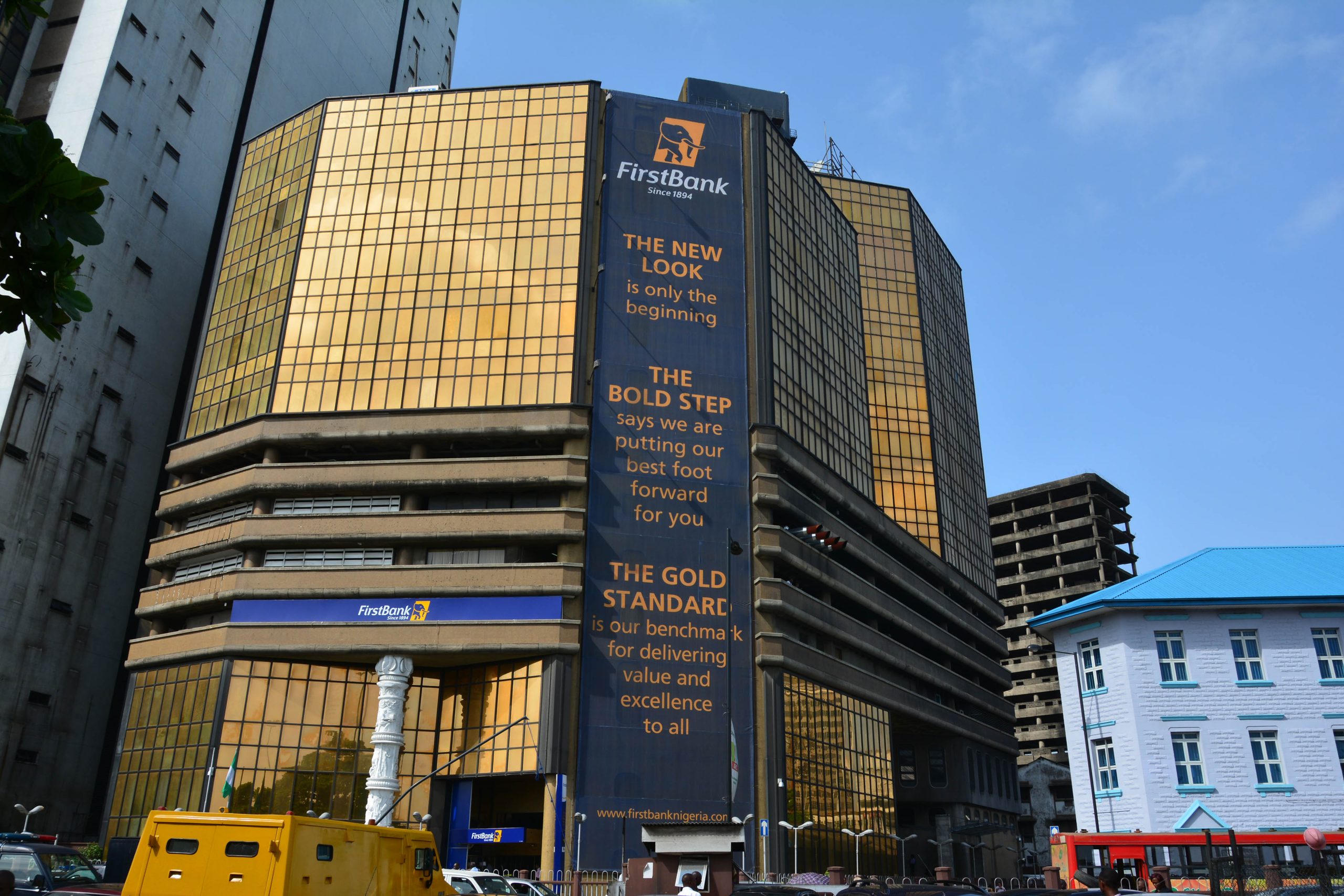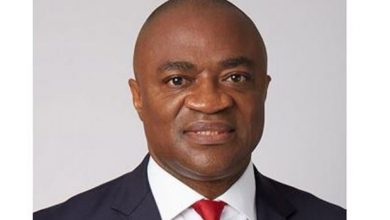UBA: BIG EARNINGS , POOR PROFIT

Is United Bank forAfrica’s bigness a curse or blessing? ; put differently or mildly , has UBA’s size advantage given it a competitive edge or turned it to mere obesity? .
The reason for this question may not be far to seek . What is the essence of making massive revenue that could not be converted to good profit despite heavy assets at its disposal ? For this singular malfeasance ,the management of the self acclaimed African global bank, appears to be loosing its reputation and leadership in the industry.
No doubt , UBA is a bank with size advantage and heavy potentials. Total assets increased Y-o-Y by 36.95 % from N5.62trn in 2019 to N7.69trn in 2020 ; total equity grew Y-o-Y by 21.10 % from N597.98bn in 2019 to N724.15bn in 2020. In addition to the above , its customer deposits increased by 48.1 percent to hit N5.7 trillion. Its heavy deposit volume reflects increased customer confidence, enhanced customer experience, successes from the ongoing business transformation programmer and the further deepening of its retail banking franchise. The potentials, among others , expose this financial supermarket , to mega opportunities and provide sinecure for its operations. But one thing is to get those opportunities , another is to optimize them . The reality remains, bigness without stretch and leverage is obesity, smallness without stretch and leverage is impotence ; even with the knowledge of how the money is made in this business , the skills to retain it at the bottom line are critical .
This is the logic behind UBA dwindling competitive fortune . While the bank is good is at the top line ; its management’s skills to do the finishing or deliver a good bottom line are far below the industry threshold . The bank made voluminous revenue from the huge resources at its disposal that is comparable to and competitive with its strongest peers in the industry. The 2020 audited financials filed at the Nigerian Stock Exchange (NSE) shows that UBA’s gross earnings grew by 10.8 percent to N620.4 billion, compared to N559.8 billion recorded in the corresponding period of 2019.
A comparative analysis of its top and bottom lines with few other tier 1 banks with resource advantage makes the incompetence of its management clearer .Zenith Bank with N8.5trilion asset base leveraged this resource advantage raking in N696 billion as gross earnings ; GTB ,with asset base N4,945 trillions grossed in a total earnings of N455 billion .
However, where or what matters most is not what you make but make out of it .Those best-positioned to outperform in the long run will have the capacity to innovate and reinvent around new business models that combine both human and technological capabilities. The fate of an organization is not predetermined by the industry in which it operates. By fostering the organizational capacity for innovation and reinvention, companies in all sectors can achieve vitality and thrive sustainably.
UBA is glaringly lacking in the above initiatives. Indeed, the management has proved it is not absolutely in control of its destiny with abysmal performance at the bottom line . The UBA’s Profit After Tax was N 113.8 billions . From the revenues indicated above, Zenith Bank wringed out N231 while GTB made N207 billions from gross earnings base of N 455 billions far below UBA’s N620 billions. What these each of these banks made almost double UBA’s . For UBA to make a meager net income from the above massive earnings is the kernel of argument raising storms against it . For some analysts and other stakeholders, this could be situated against its inefficient profit engine .This is the reality . Even Access Bank Plc has overtaken it . .Their joker is nothing but efficiency and creativity . The fact is that every company must be alert to anything that could undermine the efficiency of its engine as a profit generator ; a company must constantly inquire of itself whether its margin structure can be sustained, and whether there might be another ,much more efficient way to deliver a particular product or service .This is because over time ,new ,more efficient profit engines make older one obsolete.
Major profit and efficiency metrics confirm the above ugly scenario of UBA’s profile . This defect in its profit engine has continued to dwarf its earning power relative to its competitors . While its earnings per share in 2020 stood at N3.20 , Stanbic recorded N7.29 ; GTB , N6.84 and Zenith Bank EPS ,N7.24 .
Obviously , UBA’s pretax and net income margins , indicators pointing to how well a company manages its financial resources, are abysmally low . Its pre tax and net income margins were 21.3 % and 18.3 % respectively while GTB recorded 52.3 % and 44.1 % as Zenith Bank registered 37.2 % and 33% respectively . For UBA, the interpretation of this is that it made N18 .00 or 18 percent profit from every N100.00 revenue accrued to it . At pre tax level it was made N21.00 from every N100.00 . This is nothing but miserable .
Not only that . This is also glaringly demonstrated by its return on asset and equity , a mirror of how a bank leverages its assets and equity for profit .In the period under review UBA’s ROAE is considered considerably low by analysts was 15.7 % . In the same period , GTB and Zenith Bank registered 25 and 21 percent respectively ; these are their least in recent years . Also , despite the huge jump in its assets UBA suffered a setback in the ability of assets to contribute meaningfully to profit as its Return on average assets, ROAA, shrank to 1. 4 percent . For GTB and Zenith Bank , their ROA stood at 4.1 % and 2.1 % respectively. ROE and ROA ratios or figures are considerably low and unimpressive for UBA . Return on equity (ROE) helps investors gauge how their investments are generating income, while return on assets (ROA) helps investors measure how management is using its assets or resources to generate more income.
A detailed analysis of the bank 2020 financial statements and in the last few years shed more light on why its profit has remained unimpressive relative to its peers . UBA is one of the first tier banks that find it difficult to control its cost handle. The reason behind this may not be far to seek. The bank recorded a 12.42 Percent increase in other operating expenses . To add salt to its injury its other operating income slid by -9.83% This would have worse if not for devaluation of naira . The growth in PBT was driven mainly a +58.0% Y-o-Y growth in net trading and foreign exchange income. Foreign currency revaluation gain was the major cause for the growth in foreign exchange income, FX revaluation grew Y-o-Y by +160.70%, while fixed income securities and foreign exchange trading income grew Y-o-Y +84.64% and +15.08% respectively.
The group’s cost-to-income ratio (CIR) has trended upwards. Though in 2020 CIR fell marginally to 61.3 from 62.7 in 2019 , it is still outrageous relative to its competitors . This was the least over the last six years It was 64 percent in 2018 and 63 percent in 2019 .
Another major factor driving down the bank’s profitability and efficiency is Impairment charges for credit losses on loans ; it was up by 37.38 % Y-o-Y, from N16.34bn in 2019 to N22.44bn in 2020. Skyrocketing operating costs , an indication is an that the bank may have to rein operation costs although this was to be expected as the bank scales operations . Operation costs have direct impact on the bottom line .The cascade of the bank’s operating margins that hit its net profit could be traced to this .This has the effect of stunting its net profit margin too. The above developments are severely affecting investors’ perception of its stock .UBA’s price Earning ratio stands at 2.14x and is underperforming its industry’s 4.4x and market’s 7.4x; its price to book value of 0.3x is equally below the industry’s 0.4x and the market’s 0.7x . . And the lesson, remains in the belief that without a stretch and leverage it is absolutely difficult for a firm to rewrite the rule and retain a position of leadership .
To retain and extend leadership, company must reinvent leadership; to reinvent leadership, reinvent industry; and to reinvent industry, regenerate your strategy. To do more with less. That is the essence of resource leverage ..It springs an aspiration that takes little notice current resource constraints . This can come from labour productivity advantage; when overhead costs are less as a percentage of the total costs .it may not be labour productivity but it could management and systems productivity. From all indications, the management disappointed its stakeholders showing lack of competency in cost control
Asides the above limitations , UBA’s is well respected with very brand equity . It has every good opportunity and potential to reclaim its past glory . It did not only made money ,in the core banking businesses of maturity transformation, its savvy is highly competitive and commendable .
UBA is very sagacious and cautious too when it comes to the issue of risk .The FY2020 audited result of the group showed that its loan-to-deposit ratio (LDR) fell in 2020, settling below the regulatory minimum of 65%. LDR slipped to 43.2% in 2020 from 52.91% in 2019. This decision could not be faulted because of the elevated risk environment .
The above notwithstanding, its total loans and advances in 2020 increased by +21.34% from N2.17trn in 2019 to N2.63trn in 2020, this was the result of a +23.9% growth in loans and advances to customers while loans and advances to banks tumbled Y-o-Y by -28.46%. This increase in loans could be rationalized on the basis of the faster growing deposit rate .
With daft application of experience and skill in risk management , the group recorded a marginal decline in its non-performing loans (NPL) ratio, from 5.3% in 2019 to 4.7% in 2020. This was driven largely by robust credit risk monitoring architecture, and payment of Past Due Obligations (PDOs) as stated in the financials. NPL decline between 2019 and 2020 was on the back of the introduction of the Global Standing Instruction regulatory guidance and the rollout of BVN also aids in the recovery of loans.
The breakdown of NPL by sector shows, the oil and gas sector constituted 37%, while consumer loans and general commerce contributed 23% and 15% respectively
The banking group’s books showed that interest income from loans to corporate organizations contributed 53.8% to total interest income, contributing to the +23.96% growth in loans and advances to customers in 2020
Though the bulk of the increase of its gross earnings was driven by a +5.69% Y-o-Y growth in interest income and decline interest expense Y-o-Y by -7.96% , its net fee and commission incomes also grew marginally Y-o-Y by +3.25%. E-banking income of N44.2bn contributed 34.9% to total income from fees and commissions in 2020.
UBA Plc faced a crunchy year in 2020 as a COVID-19-induced economic downturn across African markets that had mixed consequences for the bank’s continental operations.
While most of the bank’s revenue came from its Nigerian activities its profit came from its other African operations. The spread of business across the continent has assisted the bank in spreading its operational risks and allowing it to achieve greater flexibility in financial strategy as the credit lender country-risk proofs its balance sheet and diversifies operating profit.
The increasing importance of the African market in its operations across 20 jurisdictions could prove critical to the group’s activities given the recently ratified African Continental Free Trade Agreement (AfCFTA) which is expected to build stronger commercial bridges across the continent. A breakdown of total revenue by geographical region shows that the Nigerian market saw a -7.69% Y-o-Y fall in revenue, the rest of Africa and the rest of the world categories recorded a Y-o-Y growth in revenue of +39.57% and +11.14% respectively. Notably, the Nigerian market contributed 60.0% to gross earnings, while the rest of Africa and the world contributed 37.41% and 3.18% respectively.
A Breakdown of profit before tax (PBT) by geographical region showed that the Nigerian market saw a drop of -19.08% Y-o-Y, while the rest of Africa and the world recorded growths of +44.05% and +3.82% Y-o-Y respectively. The rest of the world and African markets were equally responsible for the growth of the group’s PBT for 2020. While the Nigerian market contributed 40.34% to the group’s PBT in 2020, the rest of Africa and the world contributed 56.97% and 5.51% respectively
The liquidity ratio and capital adequacy ratio in 2020 were well above the regulatory minimum. The group’s liquidity ratio was 44.3% in 2020 a marginal decline from 43.9% in 2019. Also, the capital adequacy ratio declined marginally in 2020, from 23.4% in 2019 to 22.4%
Total deposit increased Y-o-Y by +48.64%, from N4.09trn in 2019 to N6.09trn in 2020. Deposit from banks grew Y-o-Y by +56.57% while deposits from customers grew by +48.09%




